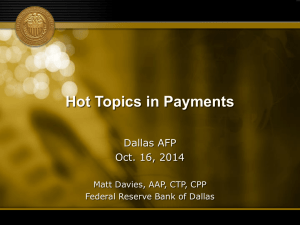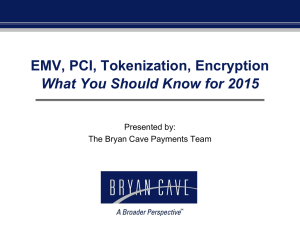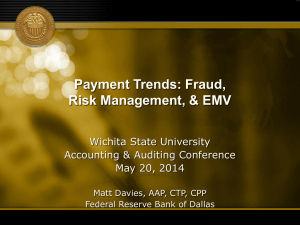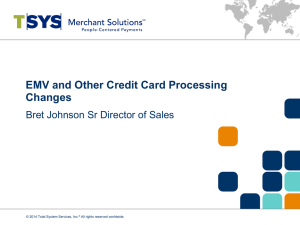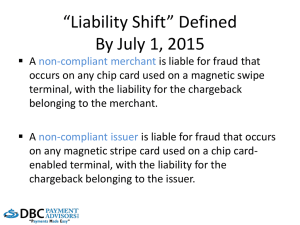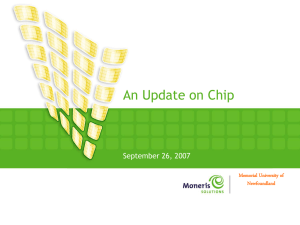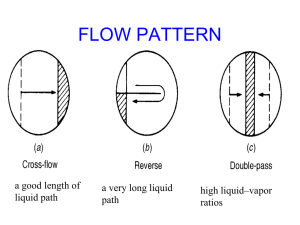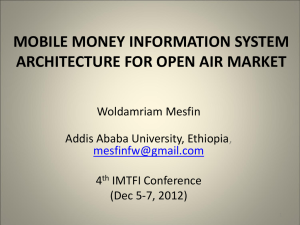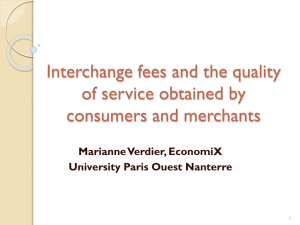Card Associations & EMV - Dallas Chapter of Credit Unions
advertisement
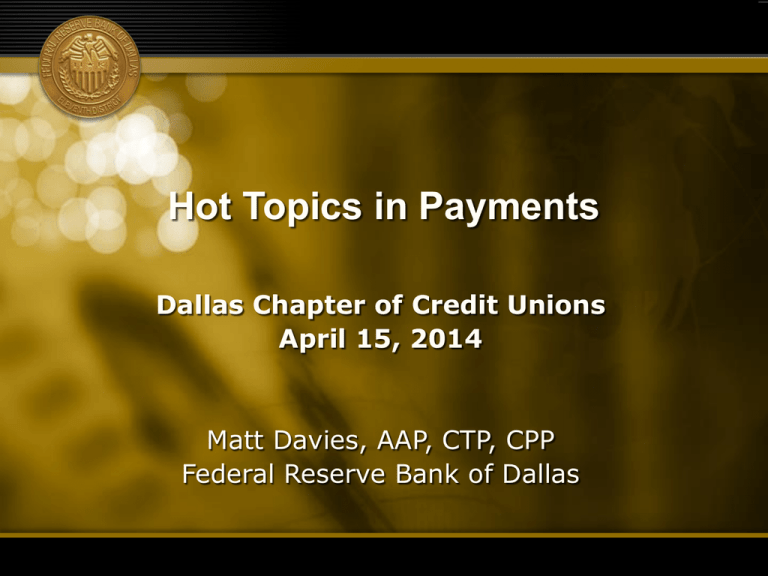
Hot Topics in Payments Dallas Chapter of Credit Unions April 15, 2014 Matt Davies, AAP, CTP, CPP Federal Reserve Bank of Dallas 1 Check/Check 21 Fraud Prevention Positive Pay/Reverse Positive Pay/Positive Pay with Payee Verification – 2010 check fraud case: Cincinnati Insurance Co. v. Wachovia Bank Mobile Banking “Constant development cycle” Online banking customer first? Mobile RDC? Mobile Photo BillPay? PIN Login? Debit card on/off? Mobile Banking “Let Wells figure out voice recognition”? Personal financial management (PFM) Mobile treasury functionality? (e.g. approve a wire transfer from a mobile device) Single sign on? Mobile RDC Risk mitigation: – FIs that offer mobile RDC should have protections in place to block duplicate deposits – Do not have to offer mobile RDC to all customers; “qualify” – Typically limit the dollar amount that can be deposited (daily, monthly) Risk: “Double Dipping” (or Triple, etc.) Hacks waged against mobile will likely increase. – As more FIs launch mobile RDC, those threats will grow. P2P PayPal PopMoney ClearXchange (Wells, Chase, BofA, Capital One...FirstBank Colorado…etc.) Corporate Account Takeover Account takeovers have grown more common, as fraudsters go after smaller businesses and smaller banks, where security is often weaker. – Many small business owners are no more savvy about risks than the average consumer. 7 Corporate Account Takeover Individuals protected by Reg E – Liable for a maximum $50. Corporate customer liability is governed by UCC. Companies are responsible for stolen funds if: – they have agreed to a security procedure with the bank, – the bank followed it, and – the procedure was ‘commercially reasonable.’ 8 FFIEC Guidance Supplemental Guidance on Internet Authentication (June 2011) Prescribes layered security for business accounts – Includes ability to detect and respond to suspicious activity when logging in and initiating transactions. – Can not rely on tokens, passwords and cookies – Use “layered security,” including software that flags unusual behavior such as multiple transfers within minutes to new recipients Directs FIs to add security for business bank accounts, including enhanced controls over admin functions Not technology prescriptive FIs: Make clear to business customers they are not protected by Reg E Corporate Account Takeover Experi-Metal (Michigan) v. Comerica PATCO Construction (Maine) vs. Peoples United) – Ruling/Appeal – Out-of-band Authentication – OSFA Approach Choice Escrow & Land Title v. BancorpSouth Bank – Dual control Dual Control Alternatives for customers that are too small to have dual custody (e.g., a company only has two employees)? – E.g., Wells Fargo this year introduced a feature called secure validation. – When a customer submits a payment, the bank can text or call the user’s mobile device and provide a number that the customer then has to enter in a field on the site. Future Trends Trends in Corporate Account Takeover: – Malware Goes Mobile – Same-Day ACH/”Faster Payments”? Prevention FI’s risk profile/risk assessment NACHA, “Sound Business Practices for Companies to Mitigate Corporate Account Takeover” (Spring 2011): https://www.nacha.org/userfiles/File/Sound%20Business%20PracticesBusiness esFinal042811.pdf Texas Bankers Electronic Crimes Task Force (Texas Banking Commissioner; U.S. Secret Service) Best Practices: Reducing the Risks of Corporate Account Takeovers (September 2011) – Protect, Detect, Respond “In Case of Emergency. . .” Employee education Ensure online access to user accounts is disabled; change online banking passwords, or open new accounts, as necessary. Review all recent transactions and authorizations on the account; if any are suspicious, cancel or reverse them as soon as (and if) possible. FI should ensure that hackers have not created any new users or payees, requested a change of information such as address or phone number, changed access levels of any user, altered ACH batch or wire transfer templates, or ordered new cards, checks or other documents. DDoS Attacks Distributed Denial of Service May be used to distract/confuse security staff at financial institutions to initiate fraudulent wire transfers NOT like the high-volume DDoS attacks which, over the last year, have brought down many U.S. FIs’ sites, (e.g. University FCU, Austin) – No thefts have been associated with these politically motivated attacks DDoS Attacks 2/2013: Brian Krebs, security blogger, reported a 12/24/2012 event at Bank of the West, in which DDoS was used as a distraction; $900,000 loss. Once the DDoS was underway, hackers took over of the payment switch (e.g., wire application), using a privileged user account with access to it. Then, instead of having to get into one customer account at a time, the criminals can simply control the master payment switch and move money from many accounts. If you are /your FI is under a DDoS, pay attention to wire system Data Breaches How did your institution respond? Many FIs and corporates do not have a written plan for dealing with breaches; all should have one. Plan should identify what executives are involved and how Should be as detailed as a plan for handling a robbery, branch fire, etc. FIs need to be able to act quickly, using fraud analysis technologies. EMV “EMV” = Europay, MasterCard, and Visa 1994: Founded the global standard for credit and debit payments based on chip card technology. “Chip cards,” “chip and PIN cards,” and “smart cards” EMV cards include a microchip that sends a dynamic protected value unique to each transaction Reduction in counterfeit card fraud (for all players) – Reduce copying (“skimming”/cloning of mag-stripe cards 18 EMV EMV standards have been adopted in many other countries, but the U.S. has lagged behind. – Merchants: Cost of changing payment terminals to accept chip payments. – Card Issuers: Reissuing all credit and debit cards – The cost of terminal and card migration may be as high as $12bn (Javelin). 19 EMV Two Ways of Accepting Chip Card Payments Contact (“dipping” the card): Cardholder inserts card into POS device. Card remains in device until completion of the transaction. If a customer removes the card before the charge is approved, the transaction will fail and the customer will be required to provide the card again. Contactless (“tap-and-go”): Cardholder waves the card by the chip card-enabled POS device to provide payment information. Once the transaction has been authorized, customer might then be prompted to enter PIN or sign a receipt. Card Associations & EMV Visa roadmap to EMV (August 2011) – Expand TIP: Visa will expand its Technology Innovation Program (TIP) to merchants in the U.S. • TIP ends the mandate for merchants to validate compliance with the PCI Data Security Standard (PCI DSS) for any year in which 75% of the merchant’s Visa transactions stem from chip-based terminals. • To accommodate the Visa mandate, merchants must use terminals that support both contact and contactless chip technology. • “Qualifying merchants must continue to protect sensitive data in their care by ensuring their systems do not store track data, security codes or PINs, and that they continue to adhere to the PCI DSS standards as applicable.” 21 Card Associations & EMV Build Infrastructure: Visa required U.S. acquirer processors and sub-processors to support merchant acceptance of chip transactions by April 1, 2013. – Chip acceptance requires service providers to be able to carry and process additional data included in chip transactions, including the cryptographic message that makes each transaction unique Card Associations & EMV Liability Shift: Visa will institute a U.S. liability shift for domestic and cross-border counterfeit card-present POS transactions, eff. Oct. 1, 2015. – Fuel-selling merchants have until Oct. 1, 2017, for transactions at automated fuel dispensers, due to the added expense of updating. Encourages EMV adoption: – Currently, POS counterfeit fraud is largely absorbed by card issuers. – With liability shift, if a contact chip card is presented to a merchant that has not adopted contact chip terminals, liability for counterfeit fraud may shift to the merchant’s acquirer. – The acquirer will likely shift that liability down to the merchant. 23 Card Associations & EMV Visa’s plan is somewhat controversial; it downplays PIN in favor of dynamic authentication, despite the PIN’s popularity with merchants and EFT networks. – Some of the early EMV chip cards from U.S. issuers use signature rather than PIN authentication. Differs from Visa’s approach elsewhere (e.g. Australia) Card Associations & EMV MasterCard & ATMs – Oct. 2016: Liability shift hierarchy will be introduced for ATM transactions in the U.S. • All ATMs that accept any MasterCard card need to be EMV compliant • After October 2016, FIs can hold ATM operators liable for fraudulent withdrawals and cash advances from debit and credit cards. – It costs approximately $2,000 to upgrade an ATM to be EMV-capable (Aite); $35k+ for a new ATM. Card Associations & EMV Visa & ATMs (January 2013) – Oct. 1, 2017 deadline to shift liability for counterfeit-card fraud to owners of machines not equipped to accept EMV cards. • One year later than the deadline set by MC. – Visa will also require ATM processors to be capable of handling EMV transactions by April 1, 2015. • Many ISOs that drive ATMs are not ready to support EMV at this time Card Associations & EMV MasterCard and Card-Not-Present (CNP) Transactions – Adoption of EMV at POS can divert criminals to online card fraud instead. – MC will announce an EMV-related liability shift for online and other CNP transactions. – Merchants that haven’t adopted acceptance technology that supports chip cards will assume from issuers the liability for counterfeit-related fraud. Card Associations & EMV MasterCard and Card-Not-Present (CNP) Transactions (cont’d): – Possible technologies consumers might use for online EMV transactions include: • a chip-equipped “display card” • a special fob that can read chip cards. • In either case, consumers could generate a unique code they could enter to secure an online transaction Card Issuers & EMV BofA – Chip and PIN Citi – Chip and PIN JPMC – First major card issuer to adopt chip-and-signature model for U.S. cards – Announced 2/25/2014 that it would begin issuing chip-and-PIN cards this year. Will others follow suit? U.S. Bancorp – Chip and Signature Wells Fargo – Pilot enabled both Signature and PIN-based cardholder verification. 29 Merchants & EMV Merchants ultimately will bear the cost of new POS hardware, software, and changes in their payment-processing operations to accept chip cards. Only about 10% of the POS terminals in the U.S. are EMV-ready Wal-Mart has been pushing for EMV adoption for years. Wal-Mart, Home Depot and AMC Theaters all prefer PIN in U.S. EMV scheme Oct. 2011: Wal-Mart turned on EMV acceptance at fewer than 100 stores (of approx. 3,600 in U.S.) – Most in areas that draw foreign visitors, such as Orlando, FL 30 Merchants & EMV Payment cards in EMV countries typically still come with a mag-stripe. (Keep in mind, the US will likely be in this “dual” environment for a long time!) When a foreign visitor in a Wal-Mart store equipped with EMV terminals tries to swipe a chip card at a terminal, which would activate the mag-stripe, the terminal prompts the cardholder to “dip” the card in the device so that it reads the chip. Issues (ASC X9) EMV’s age EMV is a proprietary standard – Governments and other entities around the world are looking for open, non-proprietary standards Ability of eventual U.S. implementations to interoperate with deployments overseas Issuers, merchants, or processors to have a say in how the standard works Outstanding Issue The EMV standard doesn’t allow for the Durbin Amendment’s requirement that debit cards must offer merchants a choice of at least 2 unaffiliated networks on which to route transactions. – Each EMV application is proprietary to a card brand, so while multiple payment methods may be available on the app, it supports only one network. – In the EMV specification, the application identifier (AID) is a string of characters that identifies both the network brand and the specific type of card (e.g. credit or debit). – Applications run under the AID and control such functions as online and offline authorization and security. Outstanding Issue “Common AID” tries to “preserve what happens today” in debit routing, because if all networks had their own application, it would call for “a lot of intelligence in the terminal” to route the transactions to the proper network. Business Case? “Fraud is a small, albeit growing, expense on an issuers' income statement.”—Douglas King, Payments Risk Expert, FRB Atlanta – E.g., Discover reported $93 million in fraud losses for 2012; (about $8 million more than it spent on postage). – Net charge-offs from credit card debt cost: Over $1.2bn in 2012; as much as $3.7 billion in 2010. CNP fraud continues to rise; EMV does not effectively prevent it in today’s online environment. Will EMV Work? Karen Webster, “PYMNTS Prophecies: Our Take On Eight 2013 Predictions” http://www.pymnts.com, Jan. 1, 2013 “EMV as a technology standard won’t make it in the U.S…I know that there is a liability shift expected in 2015, but that date will shift since there is no way that merchants in the US will be able to comply—and there’s precedent everywhere in the world for that to happen. Once it does…Merchants will make the point that the problem that EMV was intended to solve a decade or two ago in Europe doesn’t exist in the U.S. today, and a smart alternative will emerge to leapfrog the EMV deployments as they are currently envisioned. It is hard to imagine the U.S., on a wholesale basis, spending tens of billions of dollars to implement an ‘old’ technology. Rather, this smart alternative will pave the way for a global standard that will enable the global compatibility that it is argued EMV would provide. This also means the future of NFC in the US will remain uncertain, since there won’t be a critical mass of terminals at merchants for some time to come.” Tokenization In a card transaction, tokenization replaces the primary account number (PAN) with a string of numbers. Tokens are not mathematically derived from information associated with the card (unlike encryption). The card issuer can re-associate the tokenized number with the PAN for authorization and other purposes The tokenized number is otherwise worthless to hackers. AmEx, MasterCard, and Visa announced last fall they are working on a common token standard for card credentials used with digital devices. Tokenization In light of recent breaches, EMVCo is “fast-tracking” a specification for tokenization. Expects to have a tokenization architecture document ready in 4 weeks and a first draft of the specification by June Tokenization is not new, but EMVCo’s approach will differ from usual practice. – Typically, tokenization is regarded as a method of protecting data “at rest” (stored data). – The new spec will mask PANs as they flow through network pipelines for authorization and settlement, rather than while they are stored by retailers or other organizations . Alternative Currencies Alternative Currencies – Bitcoin – Others? Questions? Matt Davies, AAP, CTP, CPP Payments Outreach Officer Federal Reserve Bank of Dallas Phone: 214-922-5259 E-mail: matt.davies@dal.frb.org Follow us on: @DallasFed DallasFed


